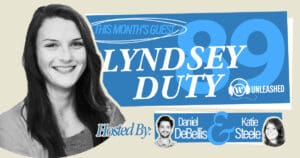
WGI Unleashed Episode 89: Lyndsey Duty, Environmental Scientist
On the latest episode of the WGI Unleashed podcast, we sit down with Lyndsey Duty, one of WGI’s Environmental Scientists based out of our Tampa, FL office!
Learn from award-winning professionals — explore our whitepapers, blogs, and the latest industry updates.
Join our dynamic organization of engineers, land surveyors, landscape architects, environmental scientists, and architects!
Talk to a market leader today! We’ll answer any questions you have about our professional services.
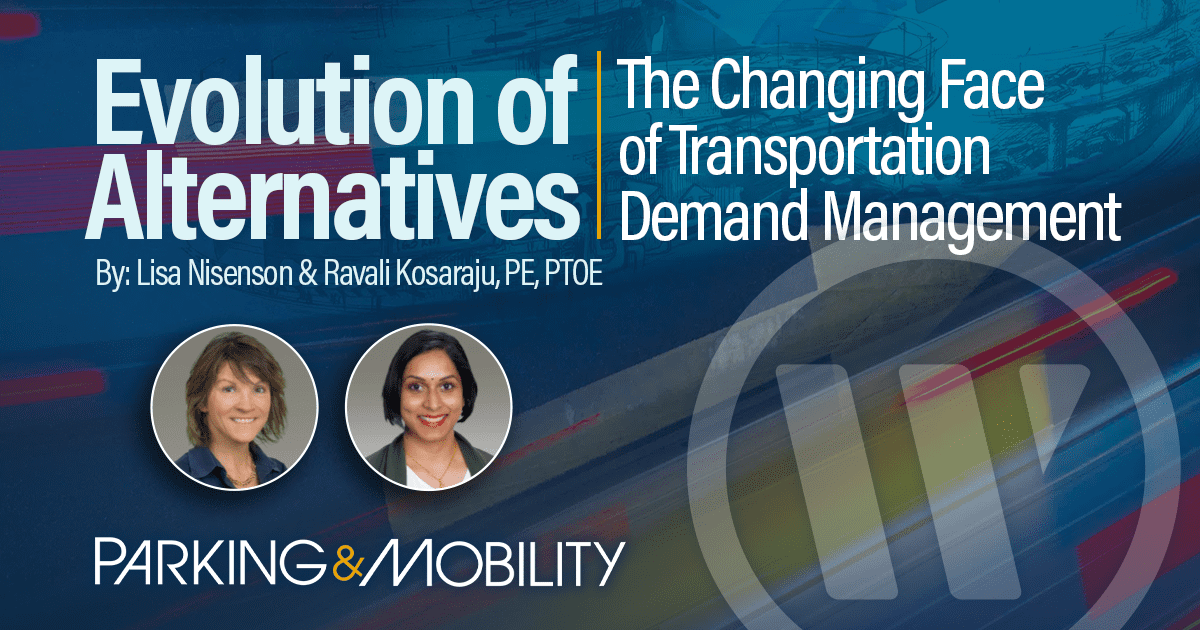
By Lisa Nisenson and Ravali Kosaraju, PE, PTOE
Transportation Demand Management (TDM) is a transportation planning approach that’s designed to reduce the number of single-rider vehicle trips into and around cities. TDM emerged from the dual oil crises of 1973 and 1979, both of which crippled the U.S. economy and caused widespread hardship. Initially, it was designed to alleviate oil consumption.
Eventually, the focus of transportation planners promoting TDM evolved from oil consumption to traffic congestion. Over the past 40-plus years, TDM has grown to be more about improving the quality of life for commuters and urban dwellers while at the same time making roads safer (and less aggravating).
Early approaches included the promotion of carpooling, as well as the development of light rail, the expansion of public bus systems, and, eventually, dedicated bus lanes. The idea was to get people out of their own personal vehicles to either ride with friends or use public transportation.
Today, TDM is a widely utilized planning approach that helps cities improve the performance of their existing transportation systems and infrastructure through:
In the beginning, TDM planners were working with a blank canvas, given the auto-centric focus of transportation in the United States. The challenge was that the United States had (and continues to have) a very well-established car-centric culture. Americans loved their cars, seeing them as a source of independence, status, and in many cases, reflections of their personalities. As a result, it wasn’t enough to just offer alternative transportation options. Planners needed to create strategies that would encourage commuters and travelers to leave their personal vehicles at home and use those alternative transportation offerings.
Historically, employers have played an essential role in the success of TDM programs, and they still do. For instance, employers often offer Commuter Choice programs offering free bus passes, preferred parking or guaranteed rides home, or amenities like showers for bike commuters. Programs can offer any combination of the following: using transit, carpooling and vanpooling, biking and walking, and parking management. Commuter Choice is sponsored by the U.S. Department of Transportation and the Environmental Protection Agency, in conjunction with local and regional authorities, which work closely with employers to promote TDM programs. It’s a true government/business/community partnership.
How does Commuter Choice benefit businesses? These programs make it easier and more affordable for employees to get to work, which has a positive impact on employee satisfaction and morale. Likewise, companies’ open support for staff’s use of alternative transportation improves employee satisfaction with their jobs and employers. The best programs have an onsite TDM manager who is a constant presence in the company promoting alternative transportation options. Having an onsite manager also makes it easier to quantify a program’s success by measuring how expensive the program is and how it impacts staff transportation behavior.
One of the most important examples of the evolution of TDM was the creation of the Association for Commuter Transportation (ACT). ACT is a national advocacy and professional association comprised of TDM professionals promoting TDM initiatives, establishing best practices, and offering educational programs for other TDM professionals. Many regional and municipal governments, as well as universities, now also have their own Transportation Management Associations to coordinate activities, incentives, and policies.
The evolution of TDM is reflected in how transportation professionals now view congestion. It’s now generally understood that, in many cities, congestion is occurring outside of traditional rush hours, a trend accelerated by post-pandemic work and commute patterns. Mobility management is also vital in growing urban areas as they mature from single-use districts to mixed-use downtowns. As such, TDM can’t focus solely on commute trips and must also address non-work trips. For instance, some cities, such as Boca Raton, Florida, now institute TDM through the site plan approval process, requiring real estate developers to include TDM programs in new developments.
Another important example of the evolution of TDM is its expansion beyond just modes of transportation. For instance, employers can help reduce congestion by promoting telecommuting, flextime, and alternative scheduling to reduce work trips into the office. During the COVID-19 pandemic, many companies discovered that their employees could work productively—sometimes more productively—from home. As we continue to emerge from the pandemic, this is a lesson that employers can put to good use in promoting TDM.
Finally, parking management has become a much more important element of TDM over the past 40 years. In fact, parking demand management is now a specialized subset of TDM. TDM-related parking measures include:
When strategically applied, these strategies, or combinations of them, can help reduce vehicle use in urban settings.
The effectiveness of individual TDM initiatives can vary based on context, level of investment, and the extent of mobility options. A region with robust transit networks will provide the best alternatives to driving, for instance. That doesn’t mean that TDM measures in communities with less robust transit systems are doomed to failure, though. There are still plenty of non-transit strategies, such as the introduction of micromobility (scooters, bikes, etc.) and flexible transit service can help increase access even in remote areas. Also, as stated earlier, employee sanctioned remote work and flextime can also promote mobility.
The co-benefits of TDM initiatives can also be key. For instance, when commuters have access to Wi-Fi and desks when using transit, they can be more productive during their commutes. There are also safety benefits. As the U.S. grapples with reducing traffic-related casualties, studies show that transit travel can be 30 times safer by rail and more than 60 times safer when taking the bus.
Ultimately, each community and each TDM program is unique and needs to be created around local conditions and the habits and values of commuters and residents in those communities. That said, there are strategies that are likely to have an outsized impact on the success of TDM programs.
Some communities are eliminating parking mandates and moving to demand-based pricing for downtown parking. This provides incentives for drivers not to commute in single-occupancy vehicles because the more cars that use parking, the more that parking will cost. The idea behind eliminating parking mandates is that parking then becomes market-driven rather than being mandated by regulations that try to anticipate future needs. This may not be the best approach for all cities, but it can benefit some.
Furthermore, unbundling parking within lease agreements removes the built-in penalty that carless tenants typically face. In this scenario, a resident pays for two types of real estate: the dwelling unit and a parking space. In effect, unbundling rewards residential tenants for not owning a car and commercial tenants for not commuting in their own personal vehicles.
Research shows that these parking-centric strategies can reduce vehicle owners by 5% to 15% and vehicle trips by 10% to 30%.
Complete Streets is a planning approach that provides safe options for all travelers, including pedestrians, bicyclists, mass transit riders, and of course, drivers. By improving sidewalks, adding bike and bus-only lanes, and reducing traffic speeds, communities can make travel safer, reduce congestion, and improve the quality of life.
Planners are beginning to frame congestion through the lens of space efficiency. Congestion is really a space problem where there is not enough room for the vehicles vying for roadway space (and parking). Supporting biking, walking, and transit use can move more people using less space.
Research shows that Complete Streets approaches typically increase non-auto travel by 20% to 100%, while auto travel declines 10% to 30%. Reducing travel speeds also significantly decreases Vehicle Miles Traveled (VMT).
For the past 20 years, urban planners have been focused on promoting the development of compact, mixed-use neighborhoods around high-quality public transit. Not only do Smart Growth, New Urbanism, and Transit-Oriented Development reduce congestion, but they dramatically improve the quality of life for residents and visitors.
Research shows that these types of initiatives tend to increase walking, biking, and public transit use by 20% to 100%, depending on the mix of transportation options and the preferences of local residents. These programs reduce driver annual miles by 20% to 60%.
We live in a technological age, and technology can help promote TDM. Introducing mobile apps that provide rewards for reduced driving can encourage travelers to seek other modes of transportation.
Research shows that commuters who use these apps reduce their vehicle travel by 73%.
Technology promises to transform TDM. Planners can use technology to help support travel decisions, particularly for short trips. According to the Bureau of Transportation Statistics, in 2021, 52% of all trips in the U.S. using all modes of transportation were for distances of less than three miles, and 28% of trips were for less than one mile.
Technology also offers exciting new transportation options with the introduction of new types of vehicles. For instance, the introduction of e-bikes with longer ranges makes them more attractive to urban users. In fact, last year, e-bikes outsold electric vehicles. Now planners need to respond to the growing demand by developing more secure parking for them and more convenient and efficient charging infrastructure.
On-demand transit uses “circulators” to replace short trips or to create a “park once” experience to shuttle commuters and visitors around activity centers and campuses. Circulators work in areas where the market for traditional buses is absent. Like with Uber or Lyft, travelers use a dedicated app to reserve a shared ride on a shuttle or van. Soon these shuttles will utilize autonomous vehicles. The app tells them where and when their pick-up will occur and directs them to the pick-up spot. The programs can be run by the municipality or by private transportation companies contracted by the City. These are particularly attractive programs in communities where there isn’t sufficient demand to warrant a dedicated bus system.
Technology is also helping support shared parking. Hybrid work schedules are likely here to stay, which means monthly parking permits for reserved spaces are a relic of pre-COVID work patterns. Shared-use software lets commuters pay per day, which builds in financial incentives to reduce driving. When linked to calendars, parking managers can plan for and orchestrate parking assignments, including mixed-use areas that transition from daytime jobs to nighttime dining and entertainment.
Tolling is another area where technology will make a difference. Policymakers are searching for ways to replace or augment the gas tax, given the rising fuel efficiency of modern gas-powered cars and rising EV adoption rates. Less gas sold means less tax revenue. Some are looking to new roadway tolls or distance-based fees as a strategy for both raising revenue and impacting commuter’s transportation mode choices. These strategies aren’t particularly impactful today because there are so few toll roads. However, they may become more important over time.
When it comes to Smart City strategies, Mobility as a Service (MaaS) is particularly promising. MaaS is a one-stop service integrating information about all forms of public and private transport services on a single app. Not only does the app show where transit routes go and where micro-mobility is available, but it also shows where parking is available at that moment and how much that parking costs. The apps can even be set up to allow drivers to reserve and pay for a parking spot. Eventually, the apps will be integrated into the vehicles’ on-dash GPS systems to provide turn-by-turn directions to transit stations and parking facilities.
As stated earlier, shared parking and dynamic pricing are starting to be important strategies for promoting TDM. Over the past year or two, several excellent software tools have been introduced to manage shared and use-based parking. These applications allow drivers or companies to book parking just on days when spaces are needed, and they can adjust pricing as demand rises and falls. This technology also gives valets and others transparency regarding when and where spaces are available.
This is an exciting time for communities wishing to implement Transportation Demand Management, as well as their planning consultants. Over nearly half a century, TDM has evolved into a powerful planning tool for reducing road congestion and improving the quality of life in our cities. And the technology that’s so prevalent in our day-to-day lives is having just as important an impact on TDM implementation, and it will continue to do so as new technologies come online.
And that’s good news. Traffic flow is non-linear and often unpredictable. Even small reductions in peak demand on congested roadways can cause outsized reductions in traffic congestion.
Lisa Nisenson
Vice President | WGI, Inc.
Lisa Nisenson is Vice President at WGI, Inc.
Ravali Kosaraju, PE, PTOE
Director of Mobility | WGI
Ravali Kosaraju P.Eng., PE, PTOE, is the Director of Mobility at WGI Inc. and a member of the IPMI Allyship & Equity Advisory Group.
To access the original article, please click here

WGI is a national design and professional services firm leading in technology-based solutions for the construction of public infrastructure and real estate development. At WGI, we’re providing Tomorrow’s Infrastructure Solutions Today.

On the latest episode of the WGI Unleashed podcast, we sit down with Lyndsey Duty, one of WGI’s Environmental Scientists based out of our Tampa, FL office!

WGI’s San Antonio team laced up their running shoes and braved the rain to take on the iconic Rock and Roll 5K – Discover how they turned challenges into triumphs in this memorable event recap!
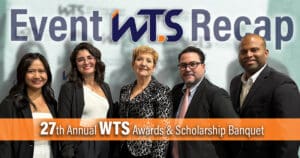
With a legacy of supporting, empowering, & inspiring women in transportation, the WTS Central Florida’s Annual Awards & Scholarship Banquet was nothing short of a night to remember.
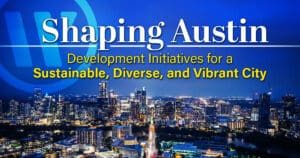
Discover how Austin is transforming urban development with proposed zoning changes, inclusive housing initiatives, and creative space preservation—all while embracing growth and sustainability.
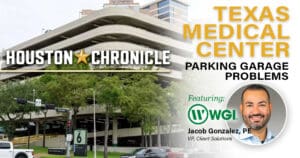
Texas Medical Center made $78M from parking last year. Why haven’t its busiest garages been upgraded in years?
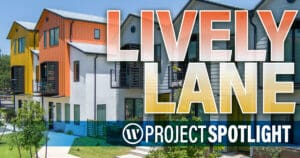
Discover how WGI helped bring Lively Lane to life—a vibrant community in San Marcos that blends sustainable design, live/work townhomes, and natural beauty to create the perfect balance of urban convenience and serenity.
You’ve been searching for a place like WGI. We look forward to meeting you soon.
Sign up to receive emails to hear our latest news and achievements in our monthly newsletter.
Enter your zip code, and we’ll personalize your experience with local projects, office locations, team members, and more.
WGI supports its associates with meaningful opportunities for growth, strong benefits and perks, while we work collaboratively with clients and co-consultants to shape and improve communities.






WGI is a dynamic organization with opportunities nationwide for engineers, land surveyors, landscape architects, environmental scientists, and architects.